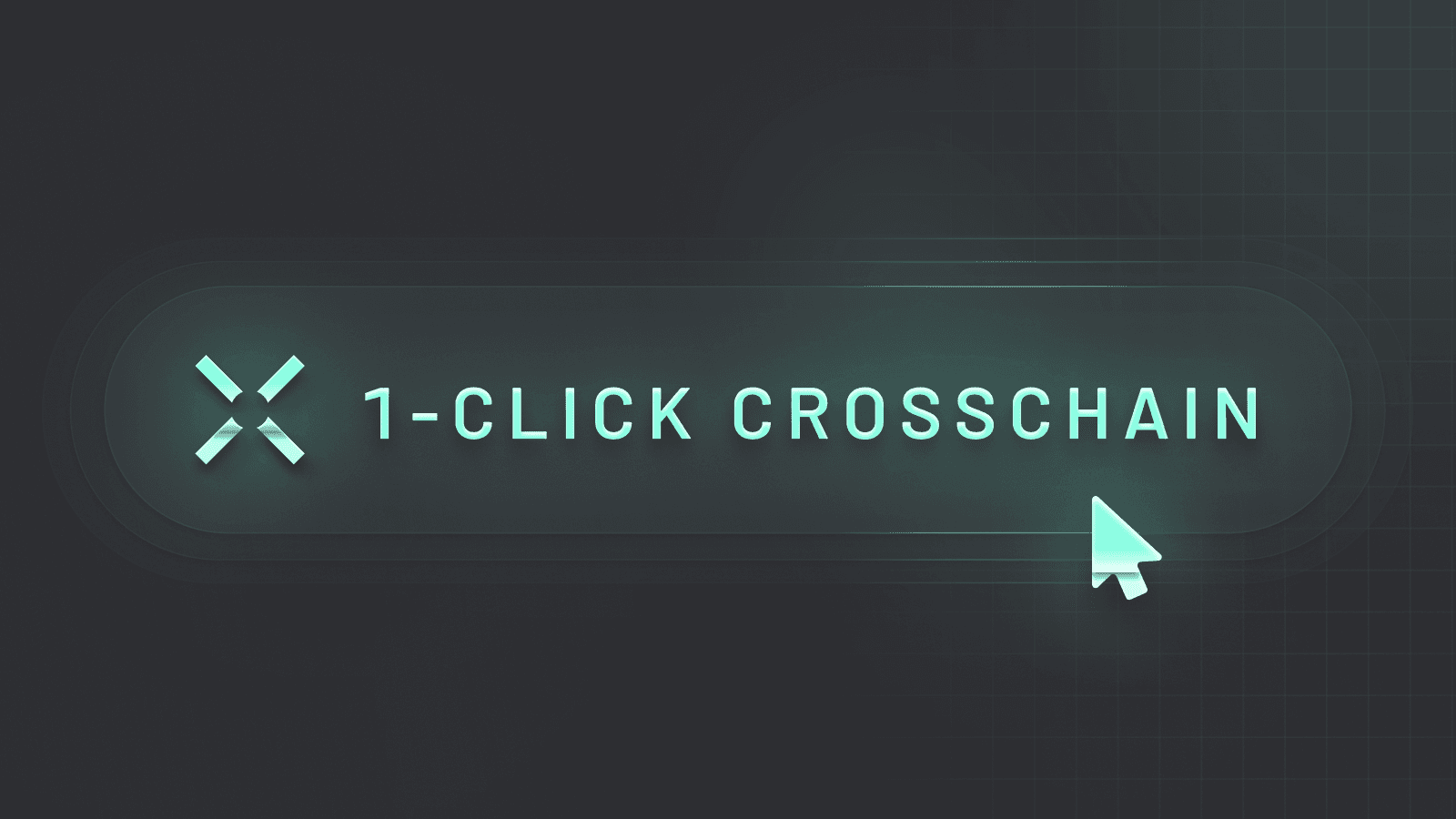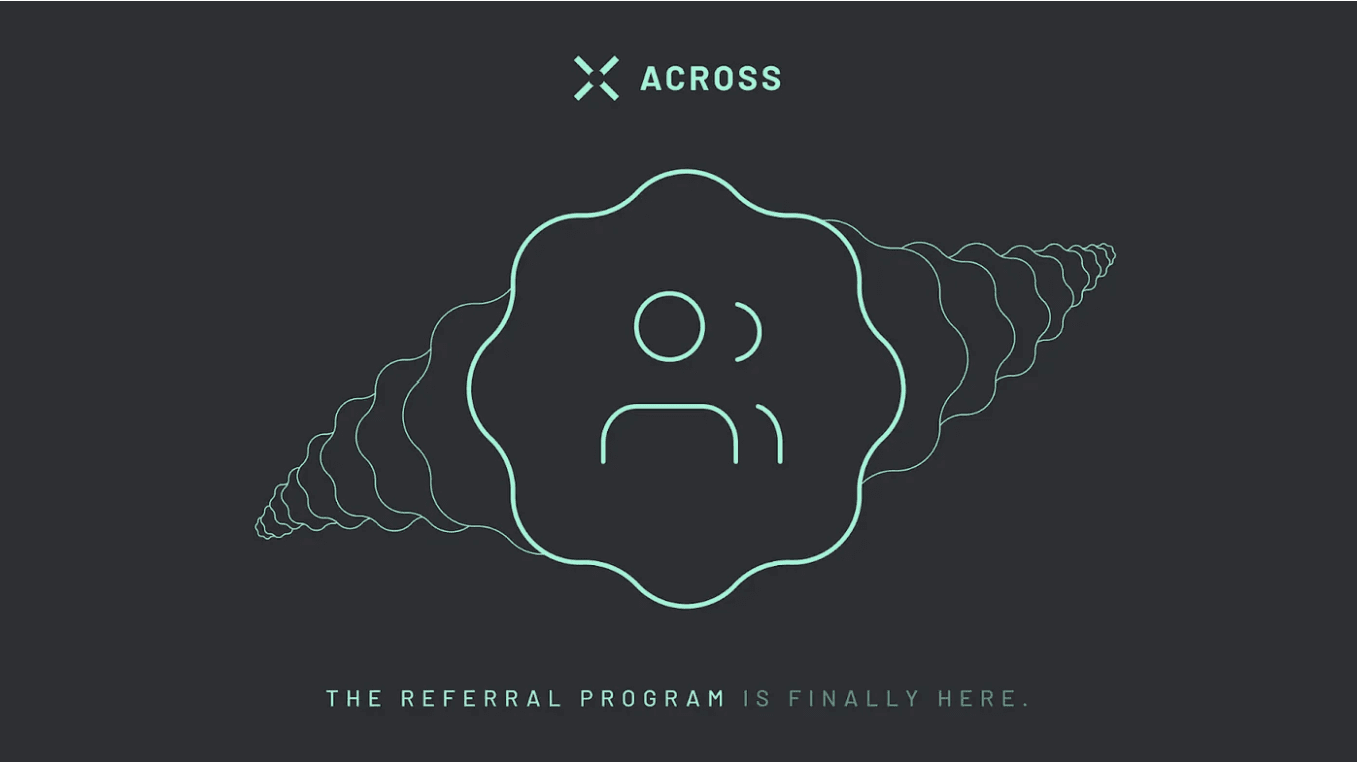tl;dr The Across team finishes up the last touches before launch. This included working through any remaining bugs, as well as making the user experience as seamless as possible. Across’ launch was highly successful, with happy users and plenty of transfers. This is the final article in the series and ends at present day: the Across team is prepping V2, which is quickly approaching along with the great liquidity migration.
It’s not often that you have to create something so big within such a small timespan.
This speedy turnaround came with successes and hardships, but all things that brought the protocol where it needed to be.
A key factor in Across’ quick turnaround came from people who were really good at what they do, focusing on what they do best. Design team members weren’t working on community tasks and vice versa. Backend engineers focused on the backend, frontend only on the frontend. Anyone who has worked in a startup knows about the tendency for all people to do all things. Avoiding this allowed team members to dive deep into what they were doing, focusing on their lane to make the best product possible.
Finishing touches
Across’ contracts were solid and audited, and the visuals were in check. The protocol was ready to launch.
Design Lead, Jesper, felt confident about what was accomplished leading up to the launch. The name felt like it made sense for the protocol and the colors and visuals connected to it meshed perfectly.
On the smart contract side of things, the last week required an overhaul to get the gas costs as low as they could be. As mentioned in our previous article, the team successfully brought costs down for relayers, from 1.4mm units of gas to about 200K. This success came from a speed bump — the original idea for using the OO with Across Protocol made things expensive. By having to rework how Across interacted with the OO, the team was able to find a way to become a bridge with really, really low fees.

Link to tweet.
Meanwhile, our frontend engineers were hard at work, making sure the end result was polished and purged of any bugs that could affect the user experience.
The main frontend goal: Flow works well and nothing can break.
Visuals were polished, the “send” functionality was tested and there was a lot of subtlety occurring in how fees were computed.
Pre-launch jitters
Admittedly, the team was nervous. This was the first real user-facing product that had come from the team. Previously, UMA’s products were for developers or users who were already heavily integrated into the UMA system. This bridge was completely different.
Users didn’t need to have extensive technical knowledge, or even any knowledge of UMA at all to have a good experience. This was exciting, but it also meant there would be more eyes on the product.
This motivated the Across team to hold themselves to an even higher standard than usual, ensuring the UX was smooth, simple and free of bugs. Random people who had never heard of UMA or Across were expected to show up — the team wanted to make sure that their first experiences were nothing short of stellar.
Lift off
The hard work paid off. CTO Matt stated that he thought it was the “single best launch that UMA has had, ever.”
The protocol was off to the races as soon as it launched, executing successful transfers with no major usability or security issues. Everything went incredibly smoothly, and users were happy. In the first week after launch, we crossed $10.4 million in total volume, had about 700 unique users and did 2 unique transactions of over $1 million worth of tokens.
When it came to the community, people showed up and were interested; they wanted to build. Groups naturally began to form on their own; surprisingly, a legal community came early on and attracted a ton of lawyers!
It’s inspiring to see so much talent come from our community. We have stellar community leaders, data analysis folks, dev talent, attorneys and more.
“I love being a part of Across because having a blank sheet of paper, guided by Risk Labs, has allowed me to assist in building a strong and supportive community. I’ve already made some long term friends and am so excited to see what happens as we grow and build in the future.”
- Mark, Across Community Leader
Another success came and still comes in the form of our dev support. Dev support is fully community-run. This is a kick-ass team that has gone unchanged, even as volume increases for Across’ bridge.
This high caliber of dev support has been a shining star as the protocol grows. People love Across, but because of how responsive support is, they love Across even when things aren’t going completely right. We’ve received a lot of positive feedback on this aspect of the protocol.
In addition to our dev support, we’ve received plenty of positive feedback in regards to our fees. We often receive comments on just how low our fees are, especially in cases of high-volume users.
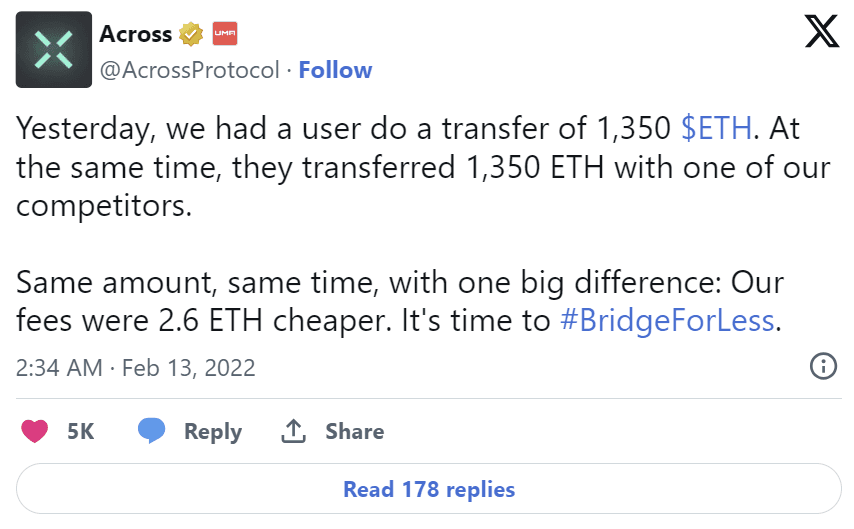
Link to tweet.
As a new protocol, our team was grateful that both small and large users thoroughly enjoyed using Across.
Our UX also continues to get compliments on the way we show our fee breakdown, something unique to Across and is part of our commitment to transparency.

Overall, the user experience just works, and it works well.
A terrifying kind of excitement
There are a lot of things that the team loves about working on Across. Our design lead, Jesper, said that working on Across is both “exciting and terrifying.” It’s amazing to reach such large audiences directly, but this also puts a lot of pressure on everyone to make sure all is operating smoothly.
Engineer Nick has many things he loves about Across — the artwork, the fact that it’s an isolated product and how easily it showcases the power of our software. Another alluring element to Nick was being able to build something from the ground up.
Across community member, Giertta, stated that she loves feeling that she’s a part of something innovative and new. Giertta enjoys “learning about and meeting people from different countries that Across has brought together.”
CTO Matt expressed that he enjoys working on something that brings such value to the consumer. People just show up for the functionality, whether or not they care about UMA, an Across token, etc. They see real value in what we’re providing.
“It feels great as a software developer to know that something you wrote is making others happy.”
- Matt Rice, CTO
Community Lead, Britt, expressed her belief that this is UMA’s most fully baked product in terms of user interface and experience. Many of our previous products were meant to be developer tools, but this one is completely developed for the end user. The fact that this first version has worked so well so far shows that there is a ton of opportunity for the future. Across has already been making a name for itself in V1.
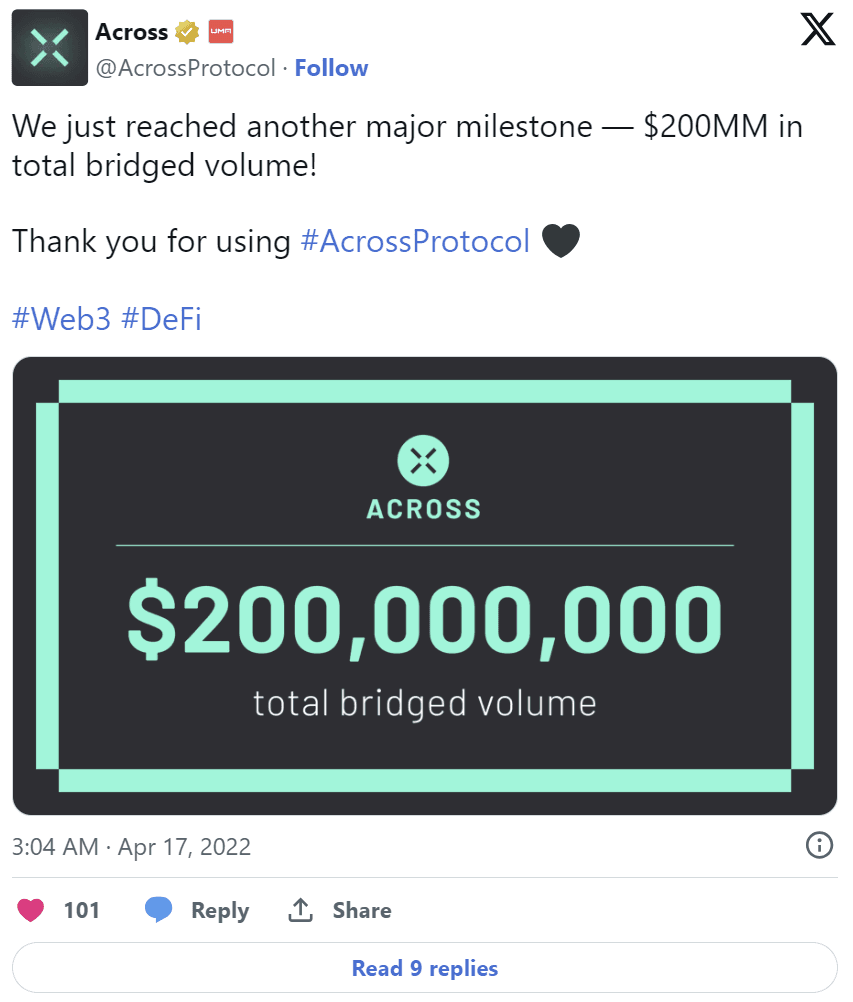
Link to tweet.
Post-launch, Across has no plans of slowing down. As CTO Matt stated, “This space is really competitive. There are a lot of good bridges out there, and it’s challenging to work in such a hyper-competitive environment. There are specific metrics that we have to do better on. You can’t lean on a feature set, you have to be cheaper, faster, and more secure.”
Looking forward to V2
Soon after V1 launched, our engineers began working on V2, which aims to be a powerful, fully packaged product. V2 aims to be a one-stop-shop for secure, cheap and fast bridging. V2 keeps everyone in mind, from users to relayers, with certain features that will make relaying more accessible, and bridging more efficient.
We’re planning on launching V2 next week on Tuesday, May 24th.
This ends our Getting Across series. Thank you for reading — we hope you enjoyed getting a peek into our team and how proud we are of this product.
- Written by Lana Foglio
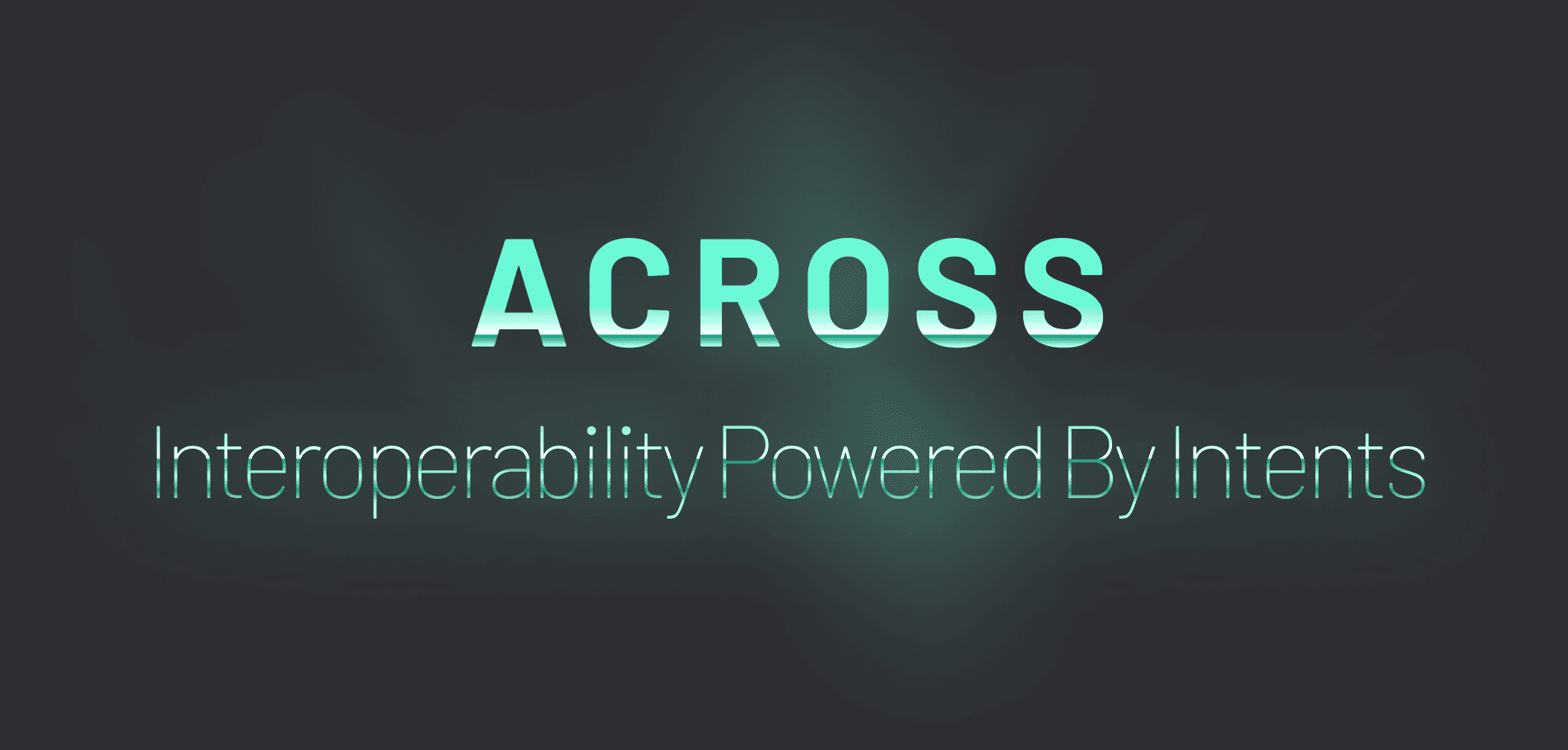
Across Protocol is an intents-based interoperability protocol, capable of filling and settling cross-chain intents. It is made up of the Across Bridge, a powerfully efficient cross-chain transfer tool for end users, Across+, a chain abstraction tool that utilizes cross-chain bridge hooks to fulfill user intents and Across Settlement, a settlement layer for all cross-chain intent order flow. As the multichain economy continues to evolve, intents-based settlement is the key to solving interoperability and Across is at the core of its execution.


